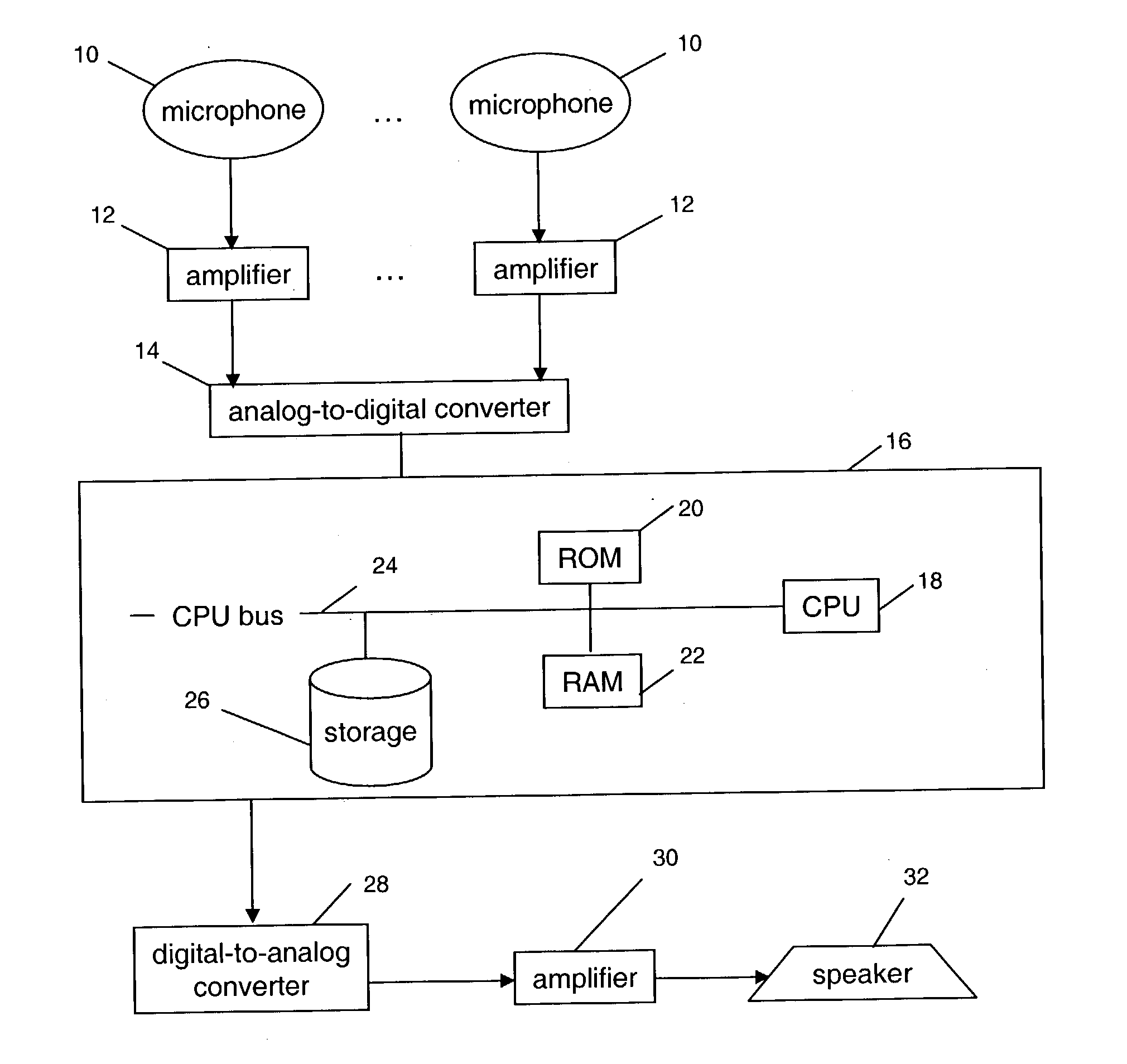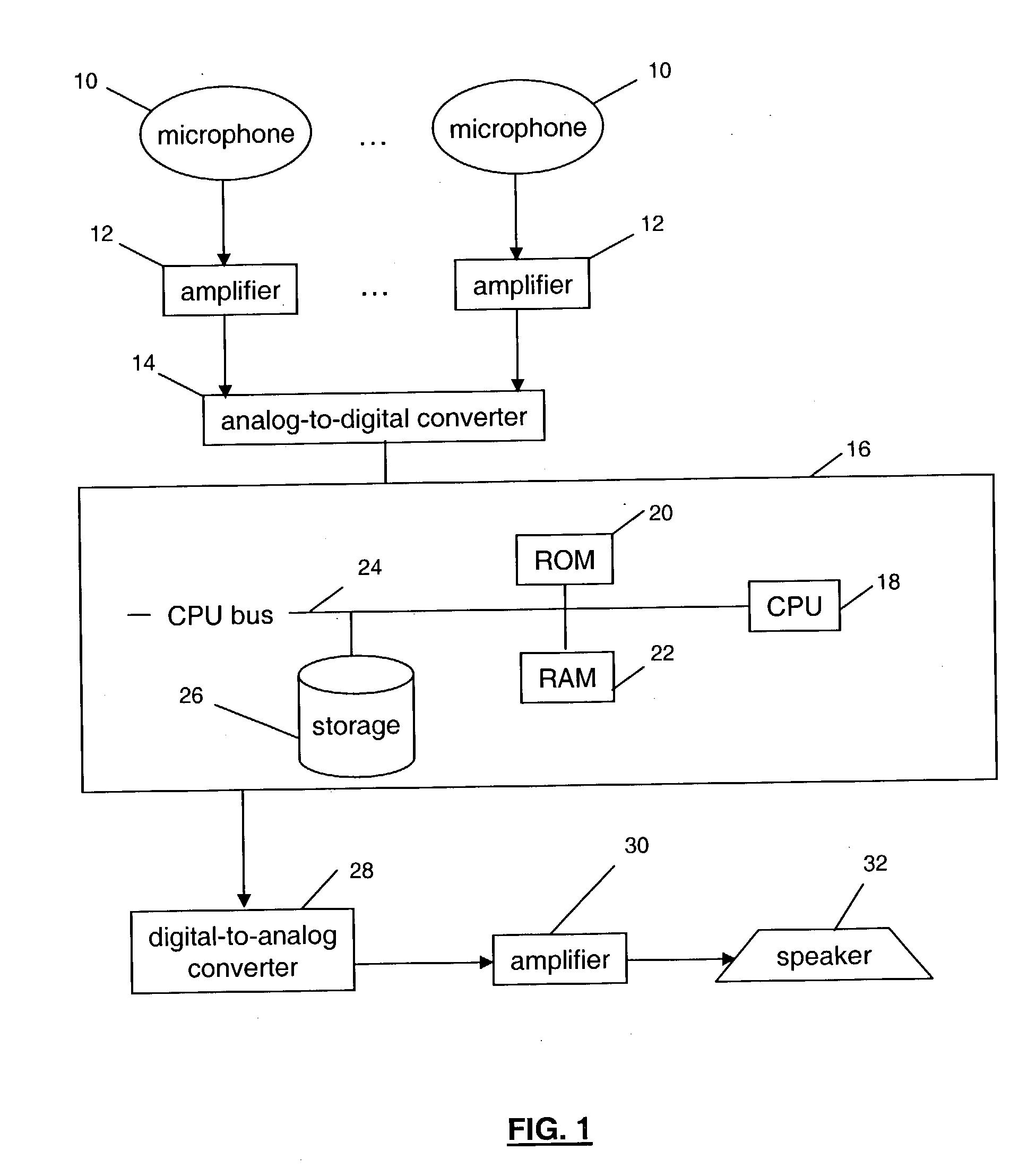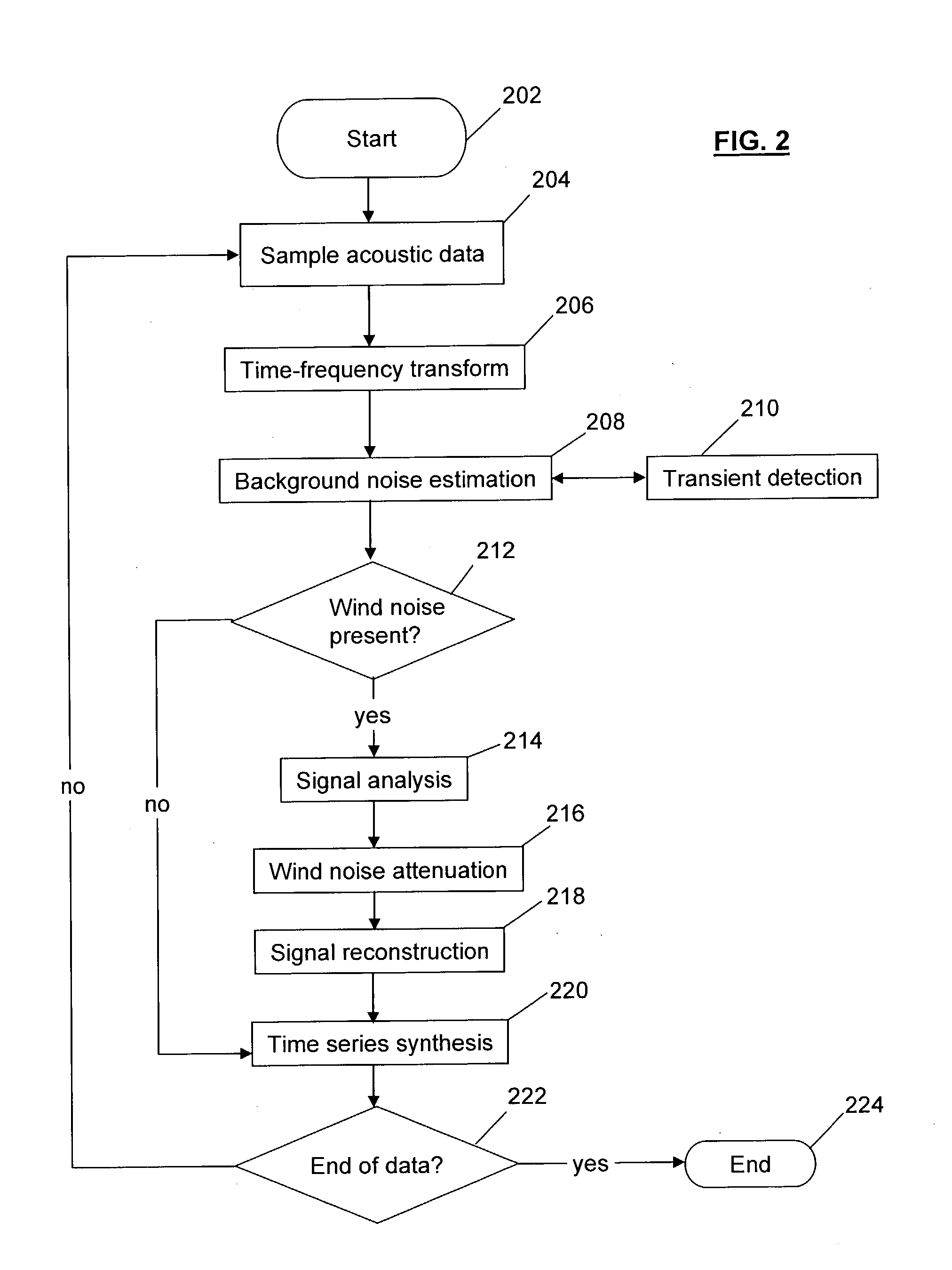Method and apparatus for suppressing wind noise
a wind noise and apparatus technology, applied in the field of acoustics, can solve the problems of severe degrading of the quality of an acoustic signal, and inability to achieve high-speed wind noise suppression
- Summary
- Abstract
- Description
- Claims
- Application Information
AI Technical Summary
Benefits of technology
Problems solved by technology
Method used
Image
Examples
Embodiment Construction
. It will be apparent, however, to one skilled in the art, that the present invention may be practiced without these specific details. In other instances, well known details have not been provided so as to not obscure the invention.
[0023] Overview of Operating Environment
[0024] FIG. 1 shows a block diagram of a programmable processing system which may be used for implementing the wind noise attenuation system of the invention. An acoustic signal is received at a number of transducer microphones 10, of which there may be as few as a single one. The transducer microphones generate a corresponding electrical signal representation of the acoustic signal. The signals from the transducer microphones 10 are then preferably amplified by associated amplifiers 12 before being digitized by an analog-to-digital converter 14. The output of the analog-to-digital converter 14 is applied to a processing system 16, which applies the wind attenuation method of the invention. The processing system may...
PUM
 Login to View More
Login to View More Abstract
Description
Claims
Application Information
 Login to View More
Login to View More - R&D
- Intellectual Property
- Life Sciences
- Materials
- Tech Scout
- Unparalleled Data Quality
- Higher Quality Content
- 60% Fewer Hallucinations
Browse by: Latest US Patents, China's latest patents, Technical Efficacy Thesaurus, Application Domain, Technology Topic, Popular Technical Reports.
© 2025 PatSnap. All rights reserved.Legal|Privacy policy|Modern Slavery Act Transparency Statement|Sitemap|About US| Contact US: help@patsnap.com



